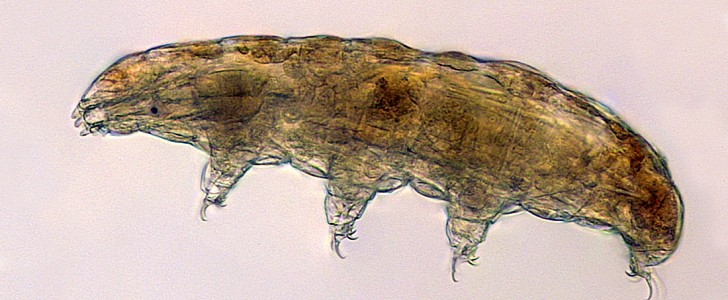For barely visible organisms, bobtail squid and tardigrades do get a lot of attention. And they are now preparing to go where most humans will never get the chance to: in space. SpaceX is launching its 22nd cargo mission tomorrow, June 3, and the tiny creatures will embark on the adventure of their lifetime, on a trip to the International Space Station.
Despite their cute name, water bears are nasty-looking creatures that will probably make you cringe. But they’re also an oddity of nature, being among the most resilient beings. They can cope with extreme cold, heat, and radiation. That is why NASA is trying to find out if they can also tolerate more stressful environments, so they’re flying them into space.
Researchers hope that the results of their experiment can also help them understand how stress factors can affect humans in space. By figuring out how tardigrades are surviving and reproducing in these environments, scientists hope to learn what tricks they are using and adapt them to safeguard astronauts, as explained by principal investigator Thomas Boothby, from the University of Wyoming.
Bobtail squid on the other hand will take part in the mission so that scientists can study symbiotic relationships between two species, them and microbes. They want to see how spaceflights can affect the molecular and chemical interactions between beneficial microbes and their animal hosts, as explained on the NASA website.
After they get to the Space Station, the onset of the symbiosis will be monitored for 12 hours. The bobtail squid will then be frozen at -80°C (-112°F) and will head back home.
The lifeforms will be aboard the Dragon capsule, which is scheduled to launch tomorrow, June 3, from NASA’s Kennedy Space Center in Florida. You can watch them take off on NASA TV with the coverage starting at 10 a.m. PT (Pacific Time). Liftoff is scheduled for 10:29 a.m. PT.
Researchers hope that the results of their experiment can also help them understand how stress factors can affect humans in space. By figuring out how tardigrades are surviving and reproducing in these environments, scientists hope to learn what tricks they are using and adapt them to safeguard astronauts, as explained by principal investigator Thomas Boothby, from the University of Wyoming.
Bobtail squid on the other hand will take part in the mission so that scientists can study symbiotic relationships between two species, them and microbes. They want to see how spaceflights can affect the molecular and chemical interactions between beneficial microbes and their animal hosts, as explained on the NASA website.
After they get to the Space Station, the onset of the symbiosis will be monitored for 12 hours. The bobtail squid will then be frozen at -80°C (-112°F) and will head back home.
The lifeforms will be aboard the Dragon capsule, which is scheduled to launch tomorrow, June 3, from NASA’s Kennedy Space Center in Florida. You can watch them take off on NASA TV with the coverage starting at 10 a.m. PT (Pacific Time). Liftoff is scheduled for 10:29 a.m. PT.







